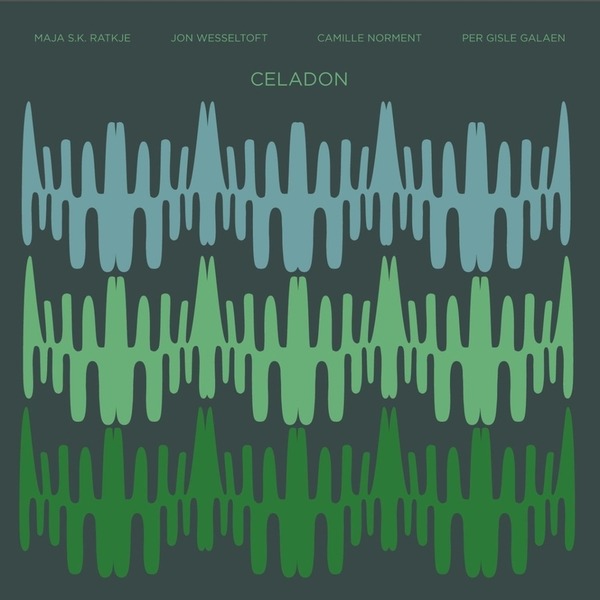Camille
Norment, Jon Wesseltoft, Per Gisle Galåen, Maja S.K. Ratkje: Celadon
(Important)
The
three pieces of Celadon bring the disparate talents of its
collaborators together, having recorded them in the Oslo mausoleum of
Norwegian artist Emanuel Vigeland in 2013. Their collaborations
appear here in three parts, starting with the murmur of “Beneath
the Bough.” The quartet’s arrangement and instrumentation slowly
reveals itself as the track progresses, with a droning interweaving
of accordion organ and harmonium (Wesseltoft), glass armonica
(Norment), and harmonium and zither (Galåen) serving as the
ebullient surface over which Ratkje’s voice hovers like a faint fog.
I was completely unfamiliar with the glass armonica (also known as
glass harmonica or bowl organ), an 18th-century invention of Benjamin
Frankling which essentially contains the surface noise of a glass
harp (that is, a series of glasses full of differing levels of water,
played with the hands) into one self-contained instrument. I found
this curious bit on Wikipedia, in regards to centuries old rumors
that extended playing of the glass armonica can lead to madness:
“The
harmonica excessively stimulates the nerves, plunges the player into
a nagging depression and hence into a dark and melancholy mood that
is apt method for slow self-annihilation. If you are suffering from
any kind of nervous disorder, you should not play it; if you are not
yet ill you should not play it; if you are feeling melancholy you
should not play it.”
It all seems believable enough considering the
taut, melancholic sprawl of Celadon, washing over with some sealing
insularity like the ceramic glaze to which the title refers.
Vigeland’s
mausoleum also lends itself supremely well to this music, adding a
rich, natural wash of reverb to each player’s sounds in different
ways. More often than not, these cuts are hushed and organic, only
occasionally expanding in dynamics; in fact, you’ll have to get
almost halfway through the twenty-minute “The Green Flood,” the
album’s second piece, before Ratkje’s vocal finally expands to really
fill the space with her highest falsetto wail.
Compared to the more
even mix of the first cut, “The Green Flood” seems to really
accentuate Ratkje’s vocal over all else, but it’s the 30-plus-minute
“Afterglow” that comprises most of Celadon. The foursome’s
arrangement becomes even harder to discern layers within at first,
including Ratkje’s voice which hovers in unison while Norment’s glass
armonica shimmers with overtones and nuance. That all changes about
six minutes in, however, when Ratkje’s voice takes the shape of a
wailing banshee, a startling contrast to the even, gliding drones of
the other players’ parts. Listeners familiar with Ratkje’s more
extreme vocal antics won’t be surprised by her Ono-esque vocalizing
about halfway through, spiraling out of control at times only to
return to subtle, microtonal vocal tones. Its this blending in and
then breaking out of the droning arrangement that makes this half
hour slab of performance most interesting, never quite knowing what
to expect. It’s not to say that the other players’ parts are
unchanging, either. Their prolonged layering of drones is more
amorphous and consistent, though, with variations in dynamics and
timbre subtly occurring on an ongoing basis. If Celadon has any kind
of climax, it might be in Ratkje’s alternating gutteral throat sounds
and shrieks that serve as a coarse contrast to the liquid surface of
the rest of the music, reaching a boiling point about twenty minutes
into “Afterglow.” It plays out as horrifically as any of Diamanda
Galás’s most difficult music, walking the line between histrionics
and terror most effectively. Despite being three cuts, the uniformity
of the arrangements herein make Celadon feel like one immersive
experience, each one perhaps pushing further toward the outer limits
of dynamics and improvisation. Recommended for fans of experimental
music and performance art, unafraid to let the foursome’s strange and
visceral world of sound envelop and eventually awe.
Buy it: Important Records | Boomkat | iTunes | Amazon


0 Comments